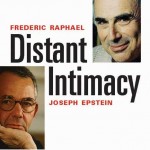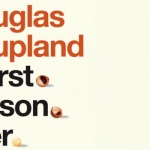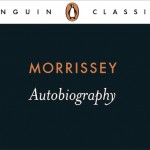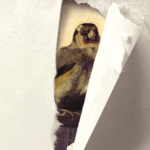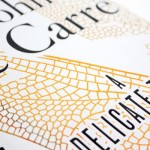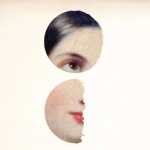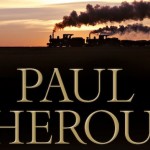Hatchet Job 2014 | Previous years | Manifesto | Press
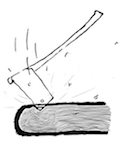
Peter Kemp on The Goldfinch by Donna Tartt
THE SUNDAY TIMES
DONNA TARTT isn’t one to ditch a winning formula. Her phenomenally successful debut novel, The Secret History (1992), opened with murder in Vermont. The Little Friend (2002), its bestselling successor, opened with murder in Mississippi. The Goldfinch, her third book, opens with murder in Manhattan.
As 13-year-old Theo and his art-loving mother walk round an exhibition of Dutch paintings at the Met, she tells him that her favourite — a small picture of a goldfinch — is by Carel Fabritius, who died in the gunpowder explosion that devastated Delft in 1654. Moments later, an explosion devastates Theo’s life. A terrorist bomb blasts through the Met, killing his mother and others. Shell-shocked, Theo stumbles out of the wreckage-strewn building clutching the Fabritius painting which, as the novel chronicles with ever-dwindling credibility, he will keep for many years.
Already abandoned by his alcoholic father, Theo finds shelter in the Park Avenue apartment of a classmate’s upper-crust family and in another, warmer surrogate home: the quaint Greenwich Village household of Pippa, a captivating, musically gifted girl injured in the bombing, and her guardian, a saintly cabinet-maker. A plot twist yanks him away from this to Desert’s End Road, Las Vegas, where his sleazy father cohabits with sun-raddled Xandra amid garish kitsch and copious supplies of pills and liquor. Aesthetically lean years follow. Only the painted goldfinch (“like a holy icon carried by a crusader into battle”) reminds him of higher things. Underworld figures increasingly congest the story line as — with his louche friend, Boris — Theo spirals down through drink and drugs. Can the painting of the goldfinch — emblem of his mother’s love and the redemptive power of art — save him?
Shifting from the concentration on a semi-closed community (a college, a little town) that intensified the atmosphere in her previous books, Tartt seems to be aiming in The Goldfinch to emulate the breadth of 19th-century fiction. Although themes and situations show her usual indebtedness to JD Salinger, Truman Capote, Jay McInerney and Bret Easton Ellis, Dickensian parallels are prominent (a vulnerable orphan, an elderly benefactor, a waif-like heroine). But while the social range is wide, there’s no matching depth.
Outdoing even The Little Friend, famously a decade in the writing, The Goldfinch has taken 11 years to appear. These epic gestations are attributed by awed Tartt admirers and devotees of websites such as Donna Tartt Shrine to uncompromising perfectionism. “It’s because of perfectionism that man walked on the moon and painted the Sistine Chapel, OK? Perfectionism is good,” she has stressed. But it’s hard to spot much of it in this ineptly put-together book.
Lists clutter its pages — as in brochure-like cameos of festive-season Amsterdam where Theo is holed up after a heist backfires: “canals and bicycle racks and Christmas lights…”, “Christmas, lights twinkling on the canal bridges…”. Stupefyingly long stretches of near inertness (especially those documenting Theo and Boris’s marathon ingestings of drugs and drink) are interspersed with frenetic bursts of mayhem where assorted gangsters and swindlers clash in heavily entangled plots and counter plots.
As if The Little Friend — a 555-page whodunit that ended with the revelation that its author had no idea whodunit — weren’t adequate proof that suspense isn’t Tartt’s metier, The Goldfinch can read like a parody of a crime thriller. The solution to the predicament presented by Theo’s possession of the painting is glaringly obvious hundreds of pages before it is finally realised (“I wish I had thought of it myself, years ago…shining in plain sight, like the sun!” Boris remarks). The exorbitant amount of detail Theo heaps into his narrative is explained away with equal clumsiness when he belatedly discloses to the reader that he isn’t writing “from memory” but, for the past 15 years, has been keeping extensive records “detailing exhaustively what I ate and drank and wore…”.
Keen responsiveness to objects is, in fact, the book’s strength — as in an alertly sensuous description of wood in a workshop: “the ripple and gloss of tiger maple and the frothed grain of burled walnut…spicy mahogany, dusty-smelling oak, black cherry with its characteristic tang and the flowery, amber-resin smell of rosewood”.
When it comes to people, though, Tartt’s imagination blurs and coarsens. Melodrama and sentimentality abound (Pippa, “like a fairy” in a gauzy green dress, is a particularly fey fabrication). Similar-seeming formulations recur. One character is “like an elegant weasel”, another like “an elegant…polar bear”, a third has an “elegant black-clad body like a python”. Where The Little Friend sought to make its readers’ flesh crawl by dropping actual cobras, cottonmouths and copperheads into its story, this novel seeks to provoke shudders with figurative snakes: a “viper-eyed thug”, a killer with “eyes…like a puff adder’s”, a villain who has “the unsettling stillness of an anaconda”.
Tartt’s fictional world has always been one of opposing extremes: preciousness and sensationalism, the rarefied coterie of students in The Secret History and the bloody violence they get mired in, the gracefully declining aristocratic Southern family in The Little Friend and the near-feral trailer trash around them. In this novel, creepy lowlifes — hitmen, conmen, fakers — are opposed to beglamoured art-lovers. Fervent pages pay throbbingly emotional tribute to the latter and art’s power to soar above death and corruption. But no amount of straining for high-flown uplift can disguise the fact that The Goldfinch is a turkey.
This article originally appeared in the The Sunday Times on 30/10/13 (£)
Read all the reviews for The Goldfinch by Donna Tartt
The Omnivore on Twitter | The Omnivore on Facebook | Sign up for The Omnivore Digest

